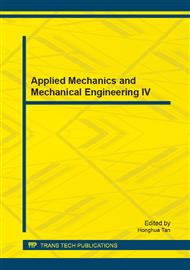p.26
p.34
p.40
p.46
p.51
p.60
p.65
p.70
p.76
Preparation and Characterization of Fe3O4 Magnetic Nanoparticles Labeled with Technetium-99m Pertectnetate
Abstract:
In the aspect of biomedical diagnosis, magnetic nanoparticle can be used as drug carrier and MRI/ SPECT/ PET contrast agents. Magnetic fluid hyperthermia is one of the most important cancer therapies. Magnetic nanoparticles display their unique features as heating mediators for hyperthermia. In this study, Fe3O4 magnetic nanoparticle was prepared by using chemical co-precipitation method. Tc-99m pertechnetate with Fe3O4 magnetic nanoparticles is prepared by using magnet adsorption method. An attempt was also made to evaluate the application in the field of magnetic targeted drug delivery and radioactive targeted cancer treatment in the future. In this work, preparation and characterization of non-polymer and polymer (dextran) coated Fe3O4 magnetic nanoparticles labeled with technetium-99m pertectnetate were evaluated and served as precursors study. The Tc-99m labeling efficiency of in-house Fe3O4 magnetic nanoparticles (MNP) and commercial kit were ca.98.4 % and 85% (n=5), under the same conc. of 6mM, 0.1 ml of SnCl2·2H2O, respectively. The Tc-99m labeling efficiency of magnetic nanoparticles with its dextran-coated was ca. 58.2% (n=5) at the same conc. and volume of SnCl2·2H2O. The in-vitro stabilities of the 3 kinds of magnetite magnetic fluids were higher than 96.0% (n=5) during 2 hours. The reducing agent of SnCl2·2H2O plays a key role due to its reducing ability for Tc-99m pertechnetate. The optimal reaction time of SnCl2·2H2O with Tc-99m is better under 1 hour. In conclusion, the Fe3O4 magnetic nanoparticle labeled with Tc-99m pertechnetate has shown good qualities for its labeling efficiency and stability. It may be feasible preliminary to utilize in the application of magnetic targeted drug delivery of bio-medicine.
Info:
Periodical:
Pages:
51-59
Citation:
Online since:
October 2013
Authors:
Price:
Сopyright:
© 2014 Trans Tech Publications Ltd. All Rights Reserved
Share:
Citation:


